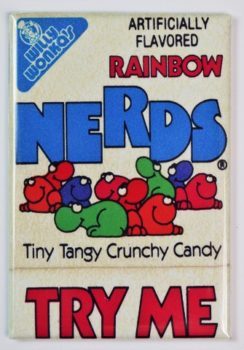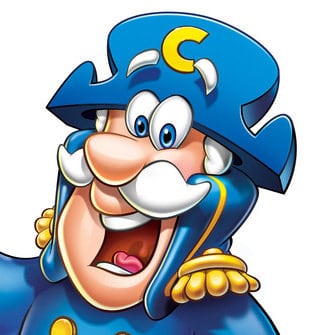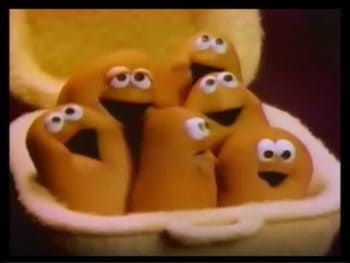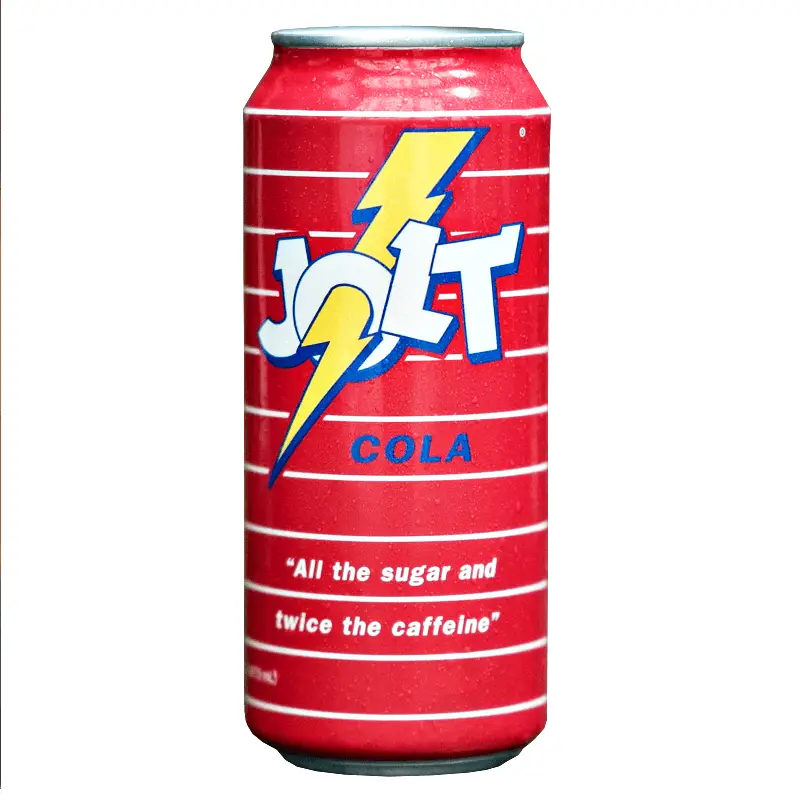
Before Monster, before Red–Bull there was a hardcore cola that was the go-to for getting the ultimate Jolt of caffeine.
Jolt Cola was created by C.J. Rapp in 1985 and was meant to target younger people, students, and young professionals. It became a bit of an underground sensation and had double the caffeine compared to other colas and soft drinks.
Jolt Cola to me almost bordered on urban legend. We knew of it growing up in the 80s but it wasn’t readily available. There was a kind of stigma associated with that I honestly was probably too afraid to even try it.
I remember hearing one story of a kid’s friend trying it and he was going nuts for 6 hours because of the caffeine content. We had no idea what was going on here, to us this was like rocket fuel that could potentially stop your heart, but out to have less caffeine than
Either way, Jolt Cola can be considered the original energy drink and got a bit of a reputation in the same way Four Loko would later on. The cool thing with Jolt Cola was they weren’t trying to hide what they were all about and in a pre-internet age, had some of the best word of mouth that I remember for a product in the 80s.
So “with all the sugar, and twice the caffeine” here’s the story of Jolt Cola.
The Beginnings Of Jolt Cola
1985 was such a damn great year, it brought us things like:
- Back to the Future
- The original NES
- The Casio keyboard
- Cabbage Patch Kids
- The Breakfast Club
- The Goonies
- The first WrestleMania
- Transformers
- Teddy Ruxpin
I have to stop there or else we’ll be here forever as this is a pinnacle year in the decade. Cola wise it’s an important year because it was the introduction of the infamous New Coke and also Jolt Cola.
Jolt Cola was created by the Jolt Company Inc that would later become Wet Planet Beverages which is the greatest name ever. They were based out of Rochester, NY and the main guy behind it was beverage creator C.J. Rapp. Also one of the best names ever.
Rapp was a sociology major at SUNY Potsdam and he noticed something while going to school there. As is the case in college students spend most of their days sleeping, doing keg stands at night, missing class, and then panicking and cramming all nighters for exams. He noticed that his fellow co-eds were concocting their own beverages in order to stay awake and study/complete term papers/complete research projects/look for blood banks to sell their blood for food and rent.
Light bulb.
An Interesting Time For Cola
So if you’ve brushed up on your cola knowledge, the mid-80s were a time of change and Coke and Pepsi were trying to cut back on things. Diet Coke had been introduced in 1983 and people were starting to be more aware of sugar and calories. We’re not into the mess of high fructose corn syrup yet but people were understanding they were basically drinking a carbonated chocolate bar sugar wise.
I recommend checking out my article about New Coke but it’s when Coca-Cola completely changed their formula to offer a sweeter version. They were doing this because Diet Coke – and diet cola’s in general – were catching on and they had a bit of a sweeter taste due to the aspartame and chemical sweeteners used. (if you want to check out how bad aspartame is read this article)
New Coke was trying to make itself taste like a diet cola and ultimately diet colas were starting to take over the landscape.
So since these beverage companies were promoting the idea of less is better (and beer companies too, “taste great, less filling”…) Rapp wanted to take things the other way. Instead of saying it had fewer calories or sugar, or caffeine Rapp wanted to go with TWICE as much. Specifically caffeine.
He wanted to have a carbonated cola with twice the caffeine of a regular one as he knew students would be all over this. Some people don’t give a crap about sugar/calories/caffeine but will always think more is better.
Creating Jolt Cola
So the plan was the keep “all the sugar and have twice the caffeine” and this would be branded right onto the can and would last there for 24 years. THe problem was they were legally limited to only having 72mg of caffeine per can which is the maximum amount allowed by the Food and Drug Administration.
This is interesting and I’m not sure why colas were limited in caffeine content? If you think how much is in giant Starbucks drinks, or Monster Energy drinks it’s confusing. I think caffeine regulation has changed, or it’s more the fact that cola’s are still “kids drinks”. A barista can refuse to serve an 11-year-old but nothing can stop them from buying one out of a machine.
The intention with Jolt Cola was to make a big mark on the soft drink industry. They wanted to call out “wimpy tasting” colas and keep going against the health and wellness movement growing through the country. It would take 6 years of development but they would introduce it nationally through franchised bottlers and distributors. They even worked out a special promotion with Bloomingdale’s of all places that would sell the drink in their delicatessen.
They would spend $1 million on introductory advertising which was quite a lot back then for a small company equalling around $2.3 million when converted today. They would roll out TV campaigns and advertising in the fall of 1986 but knew there was no way to compete against Coke and Pepsi.
So to stand out they tried to make themselves as the unhealthy bad boy of cola. In an article in the New York Times from August 1986 it was made mention how much health experts hated it. The Nutrition Action Health letter which was a publication for the Center for Science in the Public Interest would dismiss it as unhealthy due to the high caffeine content. They said that “Rapp should be nominated for personal niche in the nutrition hall of shame”.
Wow, calm down there NAHL.
What Made Up Jolt Cola
Caffeine wise it would have 5.9 milligrams for fluid ounce which just sneaks in under the maximum 6 milligrams per ounce allowed by the Food and Drug Administration. This is still half of the caffeine content per ounce in coffee which is around 11.5 milligrams.
This is the thing as much as everyone thought this was speed in a can here’s how it stacked up to the caffeine content in other beverages:
- Can of Coke- 34 mg
- Diet Coke- 45.6 mg
- Cup of tea- 40-60 mg
- 8 oz regular brewed coffee- 95 mg
- Espresso shot- 80-90 mg
- 250 ml can of Red Bull- 80 mg
- 5-hour energy shot- 100 mg
- Regular size Monster- 140 mg
- Starbucks espresso macchiato- 150 mg
- Starbucks blond roast venti 20 oz- 475 mg
Jolt Cola’s sugar content was only slightly above other top colas but a big difference is that they used cane sugar. The mid-80s was the era where high fructose corn syrup would be introduced into many more products. Obviously, it was derived from corn and this made it much cheaper than cane sugar. It also leads to less spoiling and drinks could stay on shelves longer. This massive reduction in costs is why you see drink sizes start to get so big into the later 1980s. Manufacturers could give customers way more value but basically, keep costs the same.
The problem is this stuff is borderline poison. Fructose can go straight to your liver and cause non-alcoholic fatty liver syndrome along with obesity and diabetes. It’s not that these are direct causes but with the advent of high fructose corn syrup, and higher use of trans fats in the 80s, this is when you see the obesity problem start to skyrocket.
So can sugar is not necessarily better but is a better option over high fructose corn syrup. It’s still liquid sugar that causes a massive spike in blood sugar and insulin release but it’s a bit less damaging to the body. It’s kind of like the difference between smoking 5 cigarettes compared to ten.
Funny enough, cane sugar is what drink manufacturers have gone back to in recent years to make a more “natural” product. Ultimately, Jolt Cola’s calorie content would be the same as other colas at around 170 calories and they would get their cane sugar from Louisiana.
Expectations For Jolt Cola
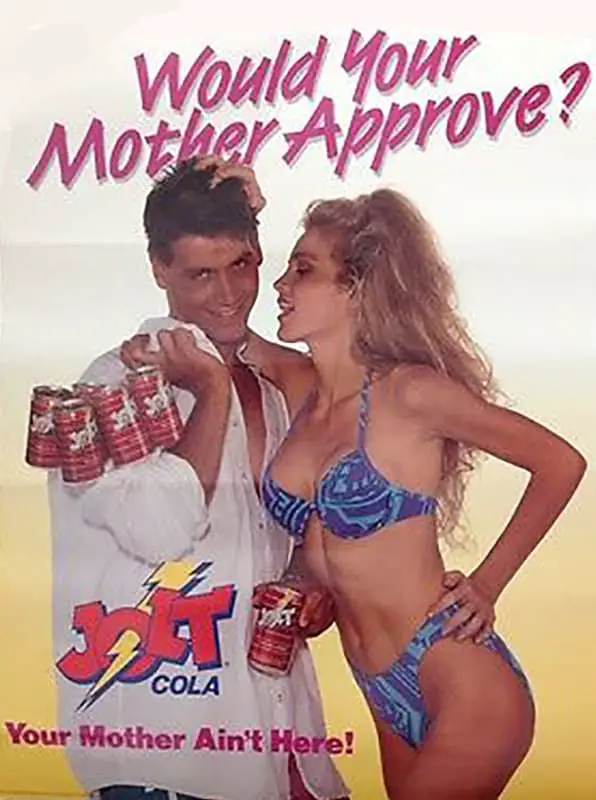
The company’s goal was to get around 2% share of the market where available and, ideally, get 4% as their ultimate goal. Soft drink industry observers recognized that the chances for them to make a dent in the market were slim. But others thought it didn’t have a chance.
Beverage Digest, which I want to subscribe to now, was an industry newsletter, and they said that
“anything can explode, but I wouldn’t bet a lot of money on this one. Consumers are health-conscious, and an inordinate amount of caffeine is going to affect the perceptions of the drink, the reality of what the body can take notwithstanding.”
They also thought it would never get a national identity and would last maybe 3-5 years.
Suck it Beverage Digest.
Jolt Cola continues to be around to this day and I wouldn’t be so quick to assume consumers are health-conscious because they are sure as hell NOT. Let’s point out a few classics over the years that were big hits:
- McDonalds Pizza
- The KFC “double-down”
- The cronut
- Twinkies
- Root beer floats
- The Dairy Queen blizzard
- The Burger King triple Whopper
- Everything on the McDonald $1 menu
- Starbucks white chocolate mocha (only 500 calories!)
- Every 1980s breakfast cereal ever
And what tend to be the four main things purchased in grocery stores? Milk, soda, beer, and potato chips.
Jolt Cola came out to some pretty huge publicity and was available right away in 22 states. They would soon sign franchise agreements to be in 40 states and Canada. The marketing worked well, and it didn’t take long for everyone to become aware of Jolt Cola. Check out this pretty risque ad, and consider this is 1987:
As predicted the biggest consumers would be college students and younger people and Jolt would make its way into the bars. You could order a “jumper cable” which was rum mixed with Jolt. All of this helped to give Jolt Cola some high visibility and references to it were made on David Letterman, Good Morning America, and CNN. Here’s a funny news feature from 1987 talking about Jolt and cavaties.
The Future Of Jolt Cola
In 1987 they gave in and started offering a low-calorie version called “Jolt 25” which had only 25 calories, get it…And here’s something I totally forgot about until researching this again, do you remember Jolt gum? This came about because they licensed the name in 2003 to a company called Gumrunners in New Jersey and they would put out a line of caffeinated gum and mints. These would have the Jolt logo on it with the slogan “Chew More, Do More”.
In 2005 Jolt would switch things up and introduce the “battery bottles” which you saw more companies doing and they would add new flavors:
- Blue raspberry
- Cherry bomb
- Silver
- Wild Grape
- Orange Blast
- Passionfruit
- Ultra (a diet drink with splenda, guarana, ginseng, taurine, and vitamin B. Basically Red Bull)
In 2009 the Jolt Cola company would file for bankruptcy due to disputes with their supplier over pricing for the new distinctive battery bottles. They would re-brand as “Jolt Energy” and in 2017 Jolt Cola returned to the Dollar Store and would now be produced by ECC Jolt, LCC based out of New York.
Final Thoughts On Jolt Cola
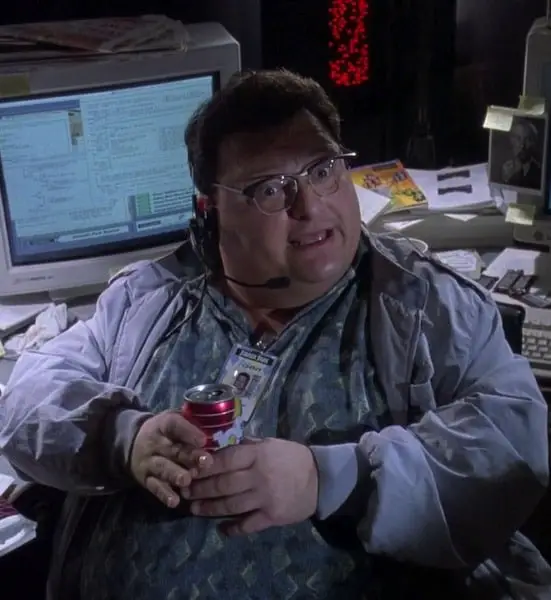
This was a great trip down memory lane. It’s the story of how word of mouth and being a bit of an underground phenomenon can create a cultural identity and a real persona. Jolt existed like that to me and had a bit of a mythical association to it. It’s not that it was dangerous, but it just had that attachment to it.
Despite people betting against it things that are part of a niche market tend to find a way to work out. When it comes to being a soft drink, they are a treat and people always want to give themselves a reward of something whether it’s candy or junk food.
Jolt Cola beat the odds and was able to stay in the mix for more than three decades.

